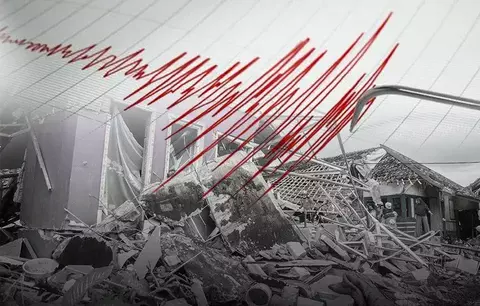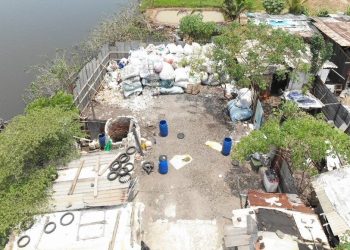Maluku, Indonesia Sentinel — A 6.0 magnitude earthquake struck off the coast of West Halmahera in North Maluku, Indonesia, on Tuesday, February 4, 2025, at 10:12 a.m. local time, according to the Indonesian Meteorology, Climatology, and Geophysics Agency (BMKG).
The earthquake’s epicenter was located at 1.66°N and 127.09°E, approximately 65 kilometers (40 miles) northwest of West Halmahera, at a depth of 92 kilometers (57 miles) beneath the seabed. BMKG’s analysis identified the quake as a shallow intraslab event, caused by tectonic activity within the Molucca Sea Plate. The fault mechanism was characterized by oblique thrust movement, a combination of vertical and horizontal shifting.
“Based on the location of the epicenter and the depth of the hypocenter, this was a shallow intraslab earthquake within the Molucca Sea Plate,” said Daryono, Director of Earthquake and Tsunami Mitigation at BMKG. “The source mechanism analysis indicates oblique thrust faulting.”
The tremors were felt across several regions. In Sofifi, the shaking reached an intensity of IV on the Modified Mercalli Intensity (MMI) scale, strong enough to be felt by many people indoors. In Manado, the intensity ranged from III to IV MMI, causing noticeable shaking indoors, akin to the sensation of a heavy truck passing by.
Other affected areas included Tondano, Ternate, Weda, Batangdua, Ibu, Kotamobagu, Galela, and Jailolo, where the intensity reached III MMI. Residents in these regions reported moderate shaking, noticeable inside buildings. In North Minahasa, the tremors were weaker, recorded at II MMI, with light shaking felt by a few individuals and slight movements of hanging objects.
Despite the earthquake’s strength, BMKG confirmed there was no tsunami threat.
“Modeling results indicate that this earthquake does not have the potential to trigger a tsunami,” Daryono assured. Furthermore, as of 10:35 a.m. local time, no aftershocks had been detected.
Read Also:
Fatal Crash Occurred at Ciawi Toll Gate in Bogor, Leaves Eight Dead and 11 Others Injured
Authorities urged the public to remain calm and avoid spreading unverified information. “Stay away from damaged structures and ensure your home is structurally sound before re-entering,” Daryono advised. “Inspect for any damage that could compromise building stability.”
Indonesia, located along the Pacific “Ring of Fire,” is prone to frequent seismic activity due to the convergence of several tectonic plates, making earthquakes and volcanic eruptions common in the region.
(Becky)


























